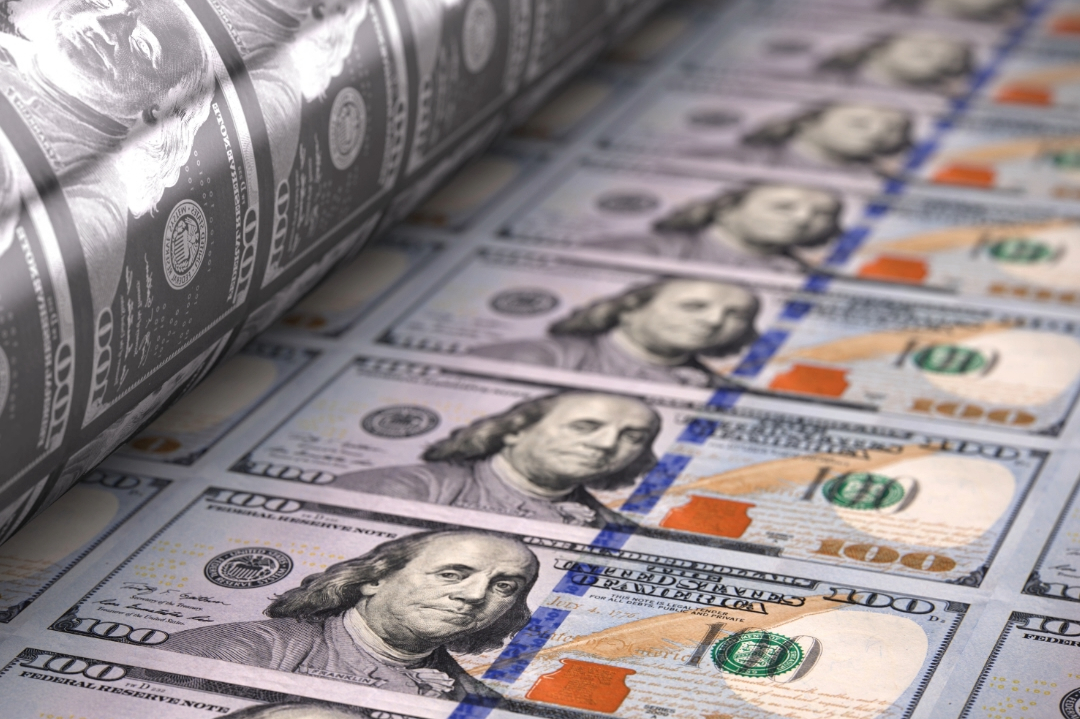If Government Can Print Money, Why Does It Borrow?

Until Modern Money Theory came along, no one seemed to ask the question—let alone answer it—as to why the US government borrows, given that it can print money. For the past 28 years, we’ve been answering it in exhausting detail. But it remained a question no one wanted to consider. However, in recent days social media has been ablaze because Jared Bernstein, who is now chair of the US Council of Economic Advisers, appeared to stumble over that exact question in a promotional clip from the newly released documentary Finding the Money.
In spite of online speculation that the clip was edited to cast Bernstein in an unfavorable light, those who have seen the film can attest that it faithfully captures the essence of the interview. But ultimately, this is not about Mr. Bernstein (or should not be, in any case)—about whom it should be said that, unlike many other economists, he recognizes the US government cannot run out of money. Indeed, the truth is that no mainstream economist could have done much better—because very few concern themselves with the monetary operations that underlie the question of why a currency-issuing government issues debt.
Let’s take a test. Which of the following is the best answer to that question?
- Government must borrow to finance its deficits because printing money would cause massive inflation.
- Government must borrow to finance deficits because that’s the law.
- Government sells bonds to reduce downward pressure on interest rates.
The first answer is wrong because all government spending (no matter the budget balance) takes the form of a credit to the recipient’s bank deposit—which is included in everyone’s definition of money. While the term “printing” is a bit misleading—since payments take the form of an electronic entry to a bank balance sheet—the point is that all government spending increases the money supply. If that caused hyperinflation, we’d have hyperinflation all the time.
The second answer is wrong because there is no such law. There are, however, two relevant rules that govern operating procedures. First, the Treasury is prohibited from overdrafts on its deposit account at the Fed, and second, the Fed is barred from buying bonds directly from the Treasury (in the new issue market). To simplify, we can say that the Treasury cannot “borrow” directly from the Fed (with some caveats as the rules are sometimes relaxed).
The third answer is correct. But this is where the going gets tough. The Fed is the Treasury’s bank and makes and receives payments on behalf of the Treasury—just as households and firms use banks to make and receive payments. When the Treasury cuts a check or makes an electronic payment, the Fed credits the reserves of the recipient’s bank, and that bank credits the deposit account of its customer. When the Treasury receives a payment—such as a tax payment—the Fed debits the reserves of the payer’s bank, and that bank debits the customer’s account. If the Treasury makes more payments than it receives, the Fed net credits bank reserves (and those banks create net new deposit money).
So, here’s what boggles the mind. Those net reserve credits place downward pressure on interest rates as banks with extra reserves lend them in the fed funds market. Before 2009, reserves earned nothing, so any bank caught holding extra reserves was throwing away potential income. Today, the Fed pays interest on reserves, but at the lowest rate in the country. Profit-seeking banks seek better returns, but prefer holding safe and liquid assets. Treasury bills and bonds fit the bill.
Synergies abound! If the Treasury is drawing down its Fed account, spending more than received in taxes, it sells bills and bonds. The Fed handles the sales. When bonds are sold directly to banks, they use reserves in payment; if a pension fund, corporation, or household buys a bond, their bank’s reserves are debited and their bank debits their deposits. When the Fed debits bank reserves, it credits the Treasury’s account. Voilà! The Treasury’s deposit account at the Fed is topped up, so it can make payments without violating the prohibition on overdrafts or direct sales of bonds to the Fed.
What if bankers change their minds and decide they’d rather have reserves? The Fed buys bonds the Treasury just sold. That is a secondary market purchase, perfectly legal, and something the Fed has been doing on scale since the global financial crisis— and must do unless it decides to raise interest rates.
Interestingly, the documentary has another sequence in which comedian John Oliver proclaims that economists have no [expletive] idea what determines interest rates. Olivier Blanchard, formerly of the IMF, now emeritus professor at MIT, proclaims that government deficits and debt cause rates to rise. However, he is asked: if that is the case, why is rapidly rising government debt since the early 2000s correlated with falling and then near–zero interest rates up to Chairman Powell’s recent decision to raise them? His response was classic: economists have no clue. The documentary then cuts to me. My response: because the Fed sets interest rates.
L. RANDALL WRAY is a Senior Scholar at the Levy Economics Institute.

